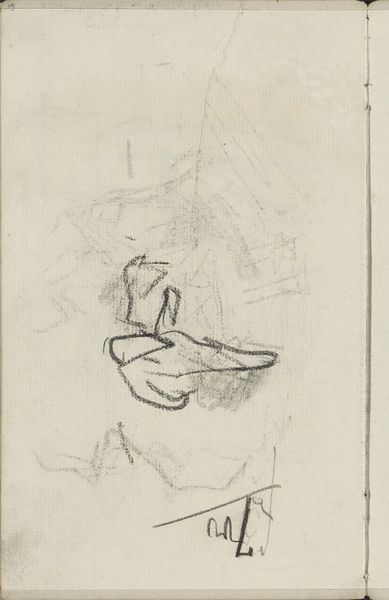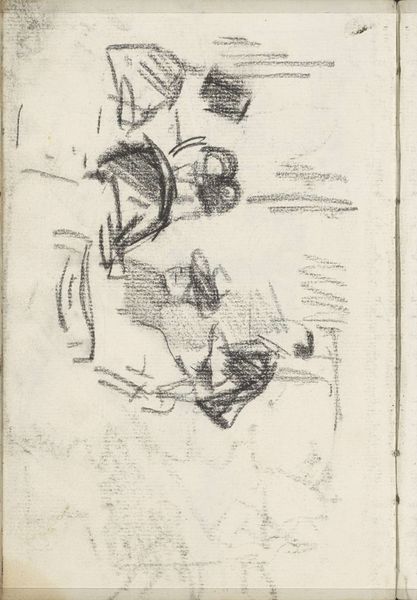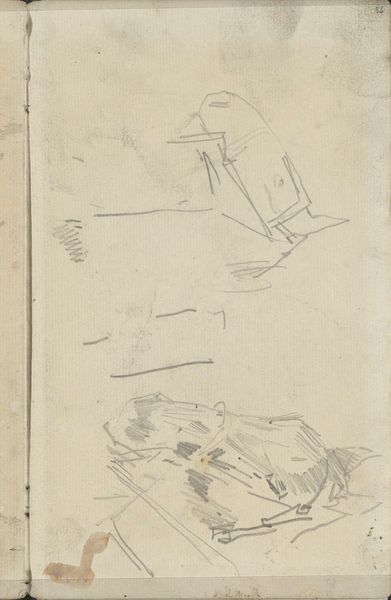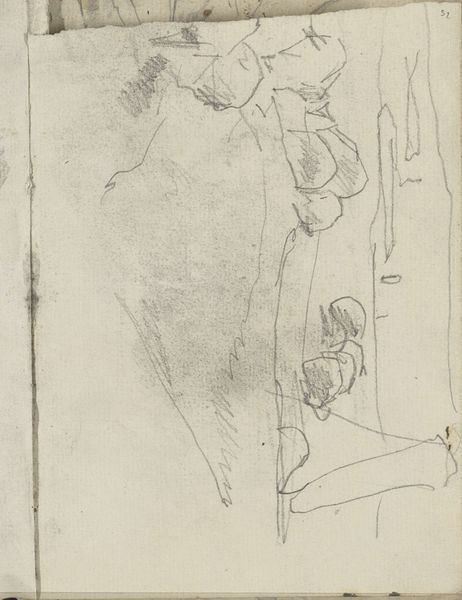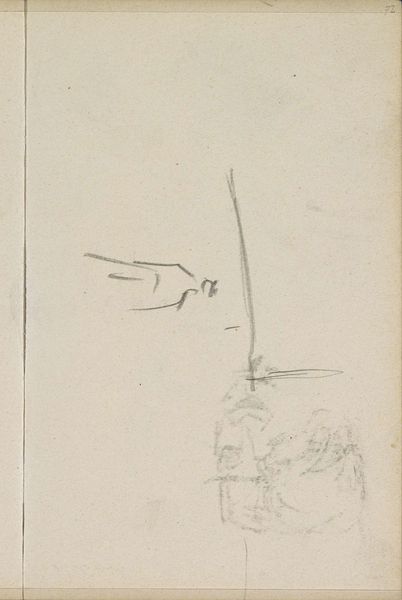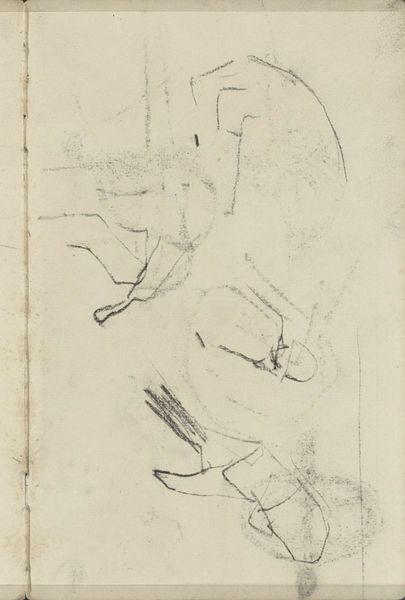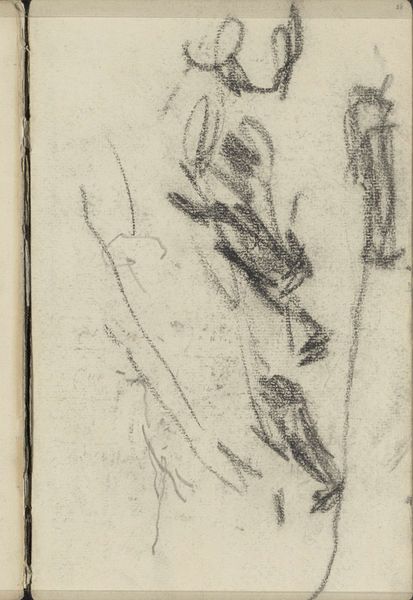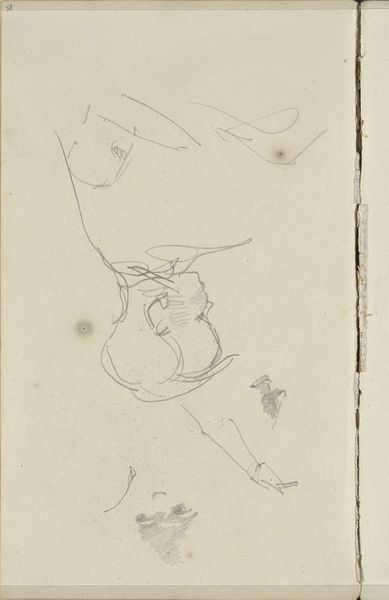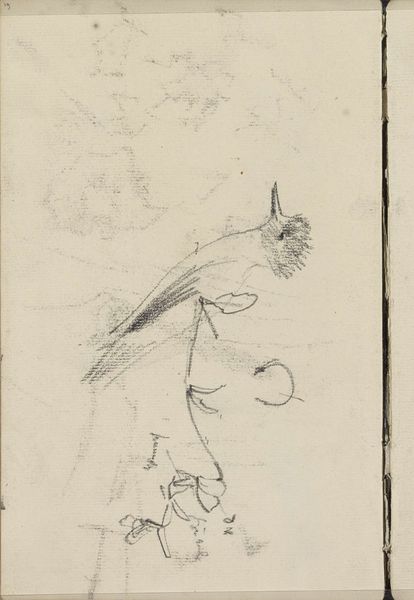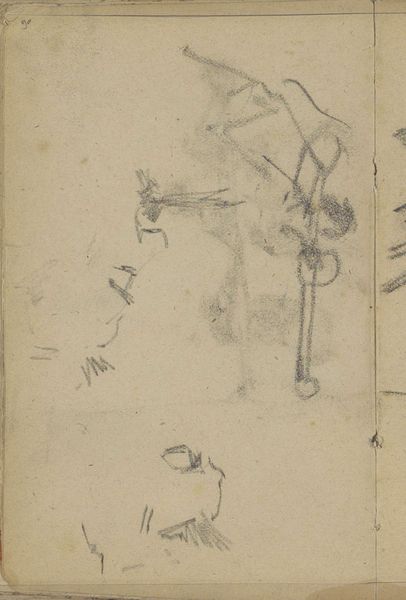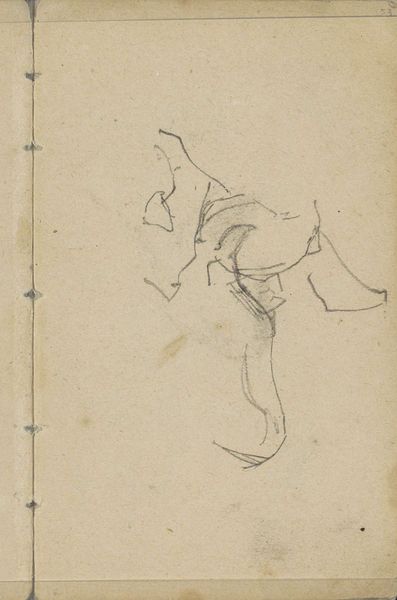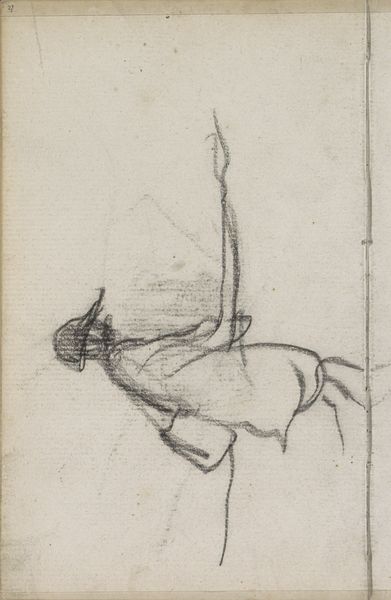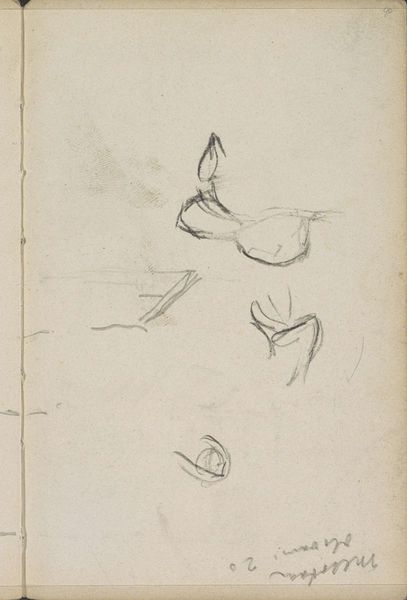
drawing, paper, pencil, graphite
#
portrait
#
drawing
#
impressionism
#
figuration
#
paper
#
pencil
#
graphite
#
modernism
Copyright: Rijks Museum: Open Domain
Curator: Here we have George Hendrik Breitner's "Studieblad," a graphite and pencil drawing on paper, likely from between 1881 and 1883. It’s part of the Rijksmuseum's collection. What's your initial take? Editor: It feels immediate, almost like a fleeting glimpse into a private sketchpad. There's a sense of incompleteness, rawness that speaks to the artistic process, doesn’t it? Curator: Absolutely. For me, the starkness of the medium, the graphite and pencil, focuses attention on line and form. Note how the clustered figures hint at narratives untold. Does the symbolism in that figuration draw your attention? Editor: I find the sketch interesting for how it embodies a moment in time, but not necessarily a specific historical moment as much as the moment of artistic observation itself. Consider how sketches like this reflect the rapid changes of late 19th century Dutch society… urbanization and class consciousness... it mirrors those evolving perceptions of reality. Curator: Indeed, the fleeting quality mirrors the experience of the modernizing city. But there's also the intimate scale. It pulls you in. Look at those figures towards the bottom and on the top right. Bare feet are drawn very quickly. It makes me wonder about his relationship with his subject, who remains elusive. The study hints at narratives— labor, perhaps poverty, maybe everyday observation. What would the image have suggested at that time? Editor: Yes, and considering Breitner’s focus on the working class, these sketches could be read as social commentary. These aren't idealized forms. There's an almost uncomfortable honesty to them. How do you interpret that deliberate lack of finish? Curator: It amplifies a sense of authentic human experience, moving past idealized imagery toward an observation-based realism that feels powerfully modern even now. Editor: I agree. The act of capturing a transient reality feels deeply resonant. It’s an artwork that keeps opening up new avenues of understanding. Curator: It is. It makes us want to interpret all sorts of messages embedded within. Editor: Precisely. And for me, that interplay between the social context and artistic interpretation is the key to unlocking this artwork's continued significance.
Comments
No comments
Be the first to comment and join the conversation on the ultimate creative platform.
